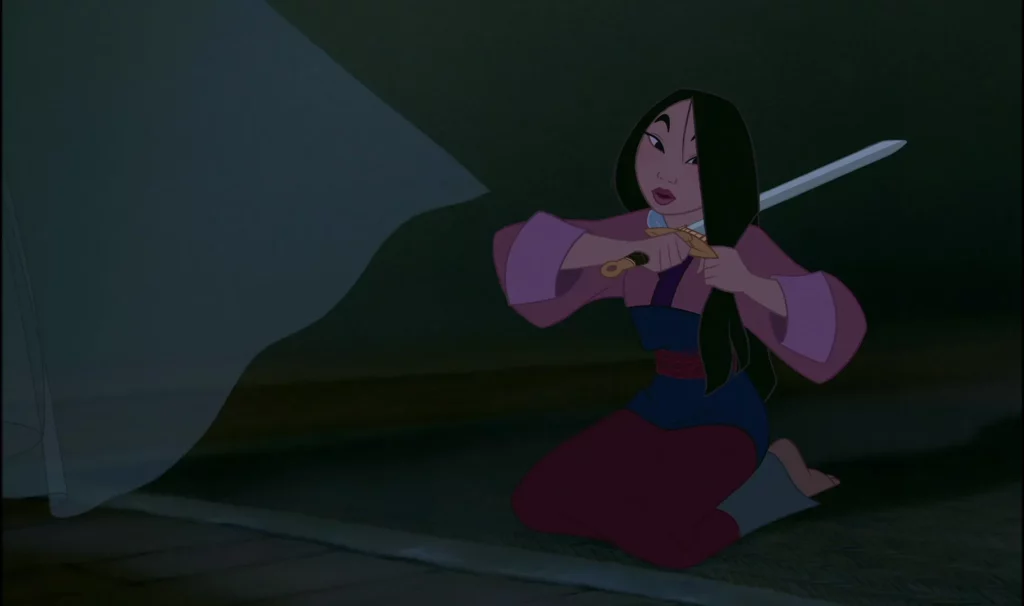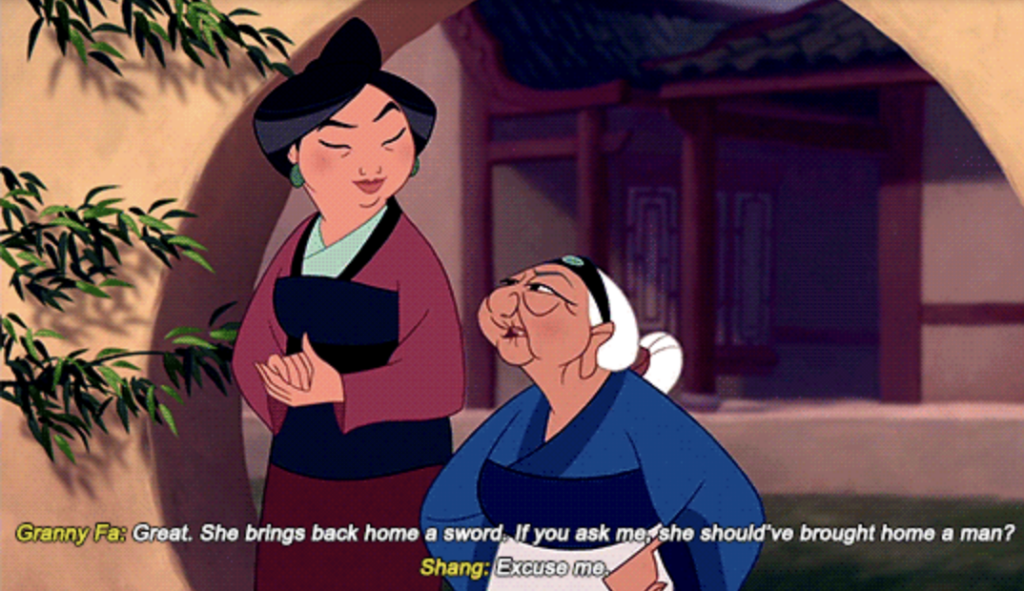Similar to most girls, I was captivated by Disney princesses’ perfectly styled hair, the way their dress moved while they danced the night away, and of course, their happy ending with the prince of every girl’s dreams. What I failed to realize was that societal norms, such as expectations of gender and sexuality, were being covertly imposed upon me. One example of this is the Disney film Mulan, which tells the story of a girl who disguises herself as a man to take her father’s place in the Imperial Army, ultimately saving his life and the entire nation of China. Mulan’s heroism and nonconformity inspired many girls, including myself, teaching us to defy expectations and be true to ourselves. However, while conducting a deeper analysis of this film, I recognized its shortcomings and accomplishments in the execution of these messages.
A central topic in this film is gender and the way society portrays it. The gender roles of the depicted time period and culture are made evident early on; women are expected to become wives, while men are expected to be warriors. Mulan challenges these standards by posing as a man so she could fight in the Imperial Army. In the scene titled, “Becoming a Warrior”, Mulan alters her appearance by cutting her hair, wearing armor that broadens her figure, and binding her breasts, which is revealed later in the film. This shows the emphasis that is placed on appearance when distinguishing between genders. Moreover, it demonstrates that gender is both culturally implemented and fluid. Through these minimal changes, Mulan was able to pass as a man and conceal her femininity, despite being raised within rigid gender roles. This film succeeds in showing the importance of discovering and embracing one’s identity, even if that entails defying societal gender norms.

Another idea that the film Mulan explores is gender roles in terms of sexuality. The strict and traditional gender norms of this society are also present within their romantic relationships. Heterosexual, cis-gendered relationships are the only ones present, and the notion of a dominant male with a submissive woman is emphasized. For example, in the song “A Girl Worth Fighting For”, the male soldiers discuss their ideal wife and claim that their motivation for fighting derives from the desire to obtain a partner who fits these submissive standards. Even though each man has different requirements, they all agree that they want a partner who will praise them and think they “have no flaws”. All while failing to consider other attributes, such as the intellectual capacities and ambitions of their future wives. Through this, the film reinforces the power dynamic and ideals of a heterosexual relationship. It appoints the man as the authority figure capable of molding his partner and the woman as the subordinate with no noteworthy characteristics beyond her ability to please her husband.
Possibly the most complex reference to gender and sexuality in this film is the portrayal of the relationship between Mulan and her love interest, Li Shang. Their connection slowly develops throughout the movie; however, it begins while Mulan is disguised as a male soldier. Some argue that their bond is purely platonic until her true identity is revealed. While others argue that there is underlying sexual chemistry from the start, thus indicating a dynamic outside of heterosexual norms. Many overlook the intricacy of this trope because the audience is aware that it is a relationship between a man and a woman, despite Mulan’s misleading appearance. The creators of Mulan include Li Shang’s homosexual attraction towards Mulan’s male persona, recognizing that it would avoid controversy and be perceived as heteronormative.
Another way to analyze the romantic storyline of this movie is how it affects Mulan’s nonconforming narrative. Mulan is raised within a society where her only role is to become a wife; instead, she challenges these norms by excelling in battle, a traditionally male-dominated realm. She goes through extensive efforts to carve her own path and reject the expectations of her culture, yet her conquest ends with a typical “fairytale ending”. In film’s closing scene, Mulan’s grandmother, Grandmother Fa, states, “Great. She brings home a sword. If you ask me, she should’ve brought home a man.” Shortly after Grandmother Fa’s line, Li Shang appears at Mulan’s home, implying the continuation of the relationship between Mulan and him. This scene not only undermines Mulan’s accomplishments as an individual, but it also fortifies the traditional gender roles that the movie claimed to oppose.

The film Mulan can be considered as socially progressive and inspirational to its young female audience, due to its message that girls can accomplish the same feats as boys. However, it falls short of successfully defying societal norms. The consequence of this failure is that it validates the temporary nonconformity of an individual with the expectation that they will revert back to societal standards, such as participating in a heteronormative relationship.